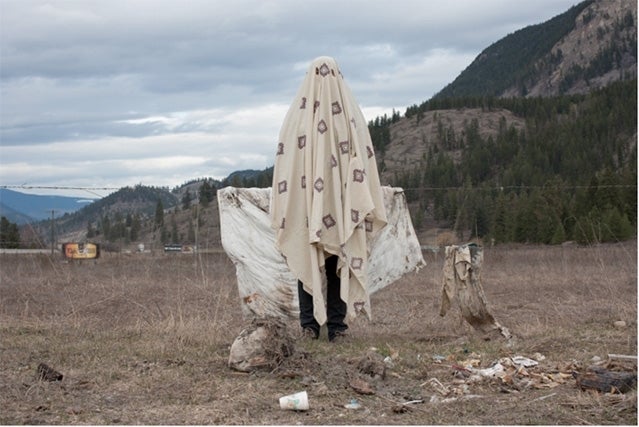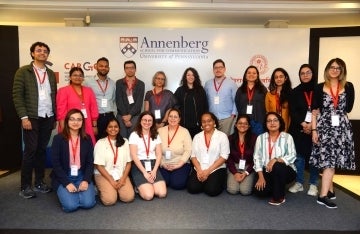Doctoral Student Hanna Morris Uses Interdisciplinary Methods to Study Climate Change Communication
A lifelong environmental activist, Morris is developing an approach to studying environmental communication.

“The Rising Tide” by Jason deCaires Taylor
In the fourth grade, Hanna E. Morris was dubbed the “turtle girl” — a nickname she couldn’t shake until after her high school graduation — following her first campaign to “save the sea turtles.” She had recently learned that sea turtles were endangered, so she took to the playground to ask her classmates for donations. This impromptu collection of dollars and quarters at recess was not well-received by her teachers.
Morris, now a doctoral student at the Annenberg School, didn’t give up after her early efforts to save the sea turtles were thwarted. In fact, her academic journey is filled with environmental activism, including a stint as editor-in-chief of her high school’s newspaper and writer of its “green” column.

She attended the University of California, Berkeley for her undergraduate studies, earning her degree in Society and Environment. There, she interned as a journalist at Earth Island Journal; started a student-run, for-credit course called Communicating Sustainability; and founded a campus environmental news blog.
For her masters’ degree, she studied Media and Communications at the London School of Economics. During this time, she developed an interest in visuals, like public art, considering how to facilitate environmental communication in ways that make the dialogue personal and show people that environmental concerns intimately affect us all.
Currently in her second year at Annenberg, Morris continues to develop her approach to studying environmental communication, and she’s involved in a variety of research projects.
Thanks in part to a fellowship from the International Association for Media and Communication Research (IAMCR) and the International Environmental Communication Association (IECA), she is studying subversive climate change photography. The project involves ethnographic interviews with photographers in Amsterdam, Manchester, New York, Miami, and Buenos Aires who are using photography to create images of climate change beyond the typical tropes of polar bears and melting glaciers. Morris says that these tropes actually cause viewers to disengage with the problem — to see it as unrelated to humans or out of our control — and she’s interested in the photographers’ novel ways of mediating climate change.
She points to her experience in Vancouver with SummerCulture as a particularly salient milestone in her research journey. Led by Morris’ advisor, Professor Barbie Zelizer, SummerCulture is a two-week immersive research trip for Annenberg doctoral students, held in a different international city each summer. Morris had the opportunity to interview local Indigenous artists, who encouraged her to think critically about the human side of climate change and how a history of imperial violence factors in.

“The Arctic is often represented in global warming photography as a disappearing place,” she says. “And it is disappearing, but what’s absent in the visuals are the Indigenous people who live in the Arctic and what’s happening to their way of life, to their livelihood, to them. Global warming is a human problem. Why aren’t we representing this in our communication about it?”
Through work with the Penn Program in Environmental Humanities (PPEH) and Data Refuge, Morris is developing a set of “visual interventions” for mediating climate change in a more human and personal manner. As part of this project, she will curate an online collection of images that portray the intimacy and materiality of global warming in everyday life.
“You don’t necessarily see global warming on a daily basis,” Morris says. “But you can recognize it through certain visual interventions. And that’s what I’m trying to research – how we can do that in the best, most effective way.”
Late last year, Morris was appointed to the Board of Directors for the IECA as its first-ever graduate student representative. In this role, she will advocate for graduate students within the organization by fostering student engagement, providing resources for students studying environmental communication, and planning a pre-conference for IECA’s upcoming bi-annual conference.
“I’m really interested in the interdisciplinary nature of what I’m studying,” Morris says. “It can be challenging at times because I’m trying to combine environmental humanities with environmental sociology and environmental communication. But it’s really exciting to draw on different disciplinary approaches and try to tackle this question of communicating climate change.”



